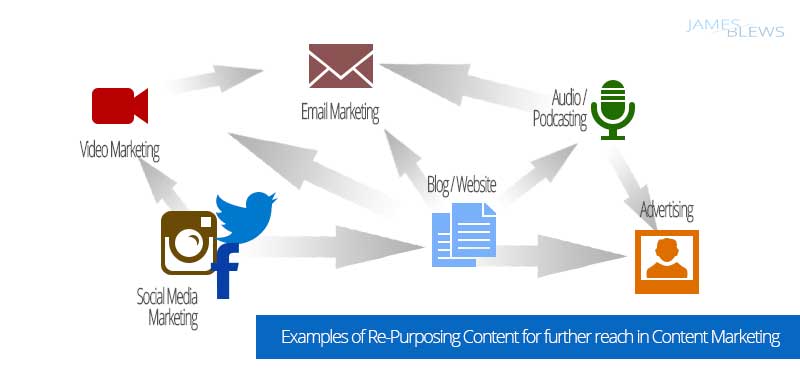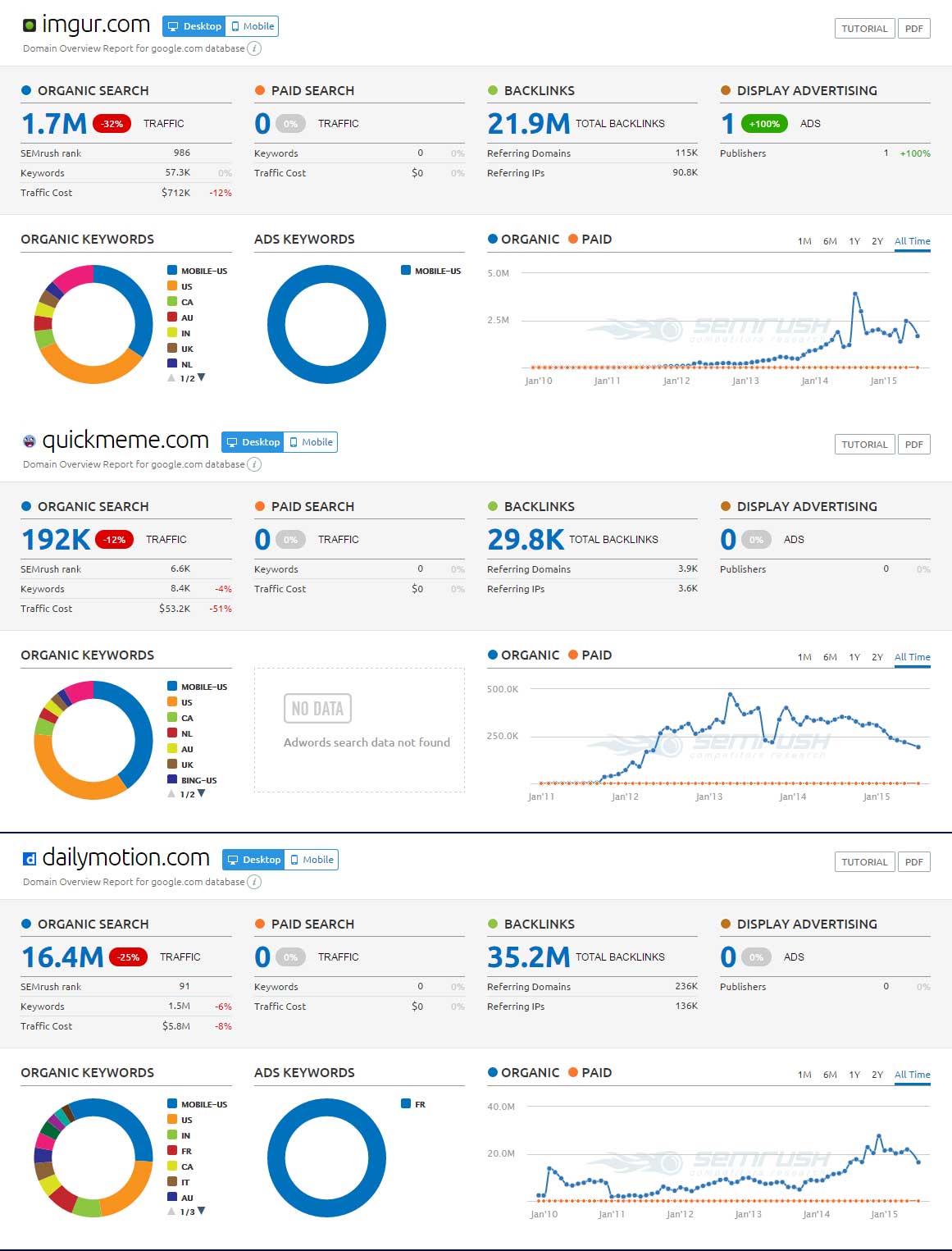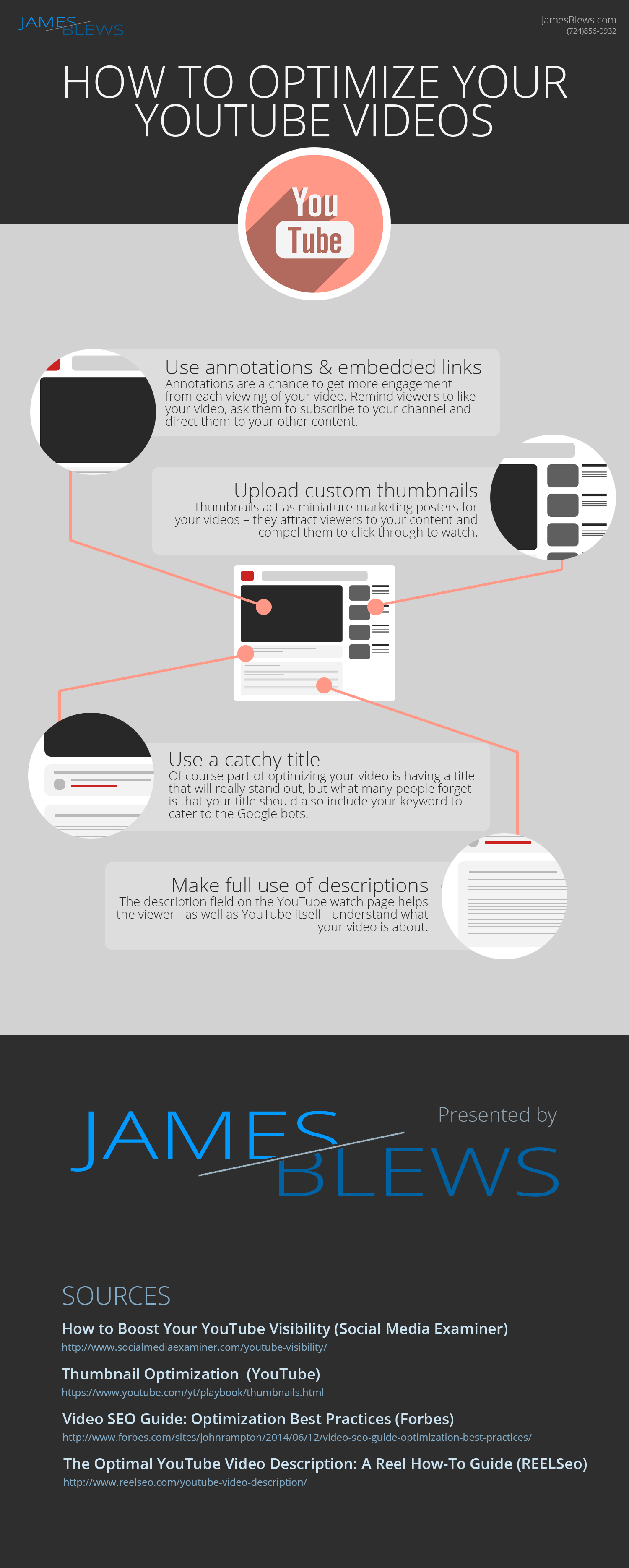As a small business owner, I’m sure that your biggest day to day thought isn’t staffing, marketing or advertising; most of the time, it is about money. And, to have a title of an article be about content marketing and story-telling…well, it might not seem like your fit. But, hang in there with me, and I might show you how to find some real value with your content, website and your brand’s message.
“Does the budget allow this or that?”
“How much did we/will we make this week?”
Yes, money is one of the strongest thoughts and considerations that small business owners have on their minds. This isn’t a greedy thought either. After all, if you aren’t bringing in enough profits, how can your business survive? Likewise, if you are spending frivolously or too heavily, you’ll be living in a box soon.
But, here is the secret to this daily stress-filled practice of cost-based business:
Content can mean a massive increase in brand awareness and traffic; it is a true value in internet marketing.
When any content is marketed correctly, this works. You could be doing content marketing in Pittsburgh, video marketing in Cleveland or even targeting a small town and just doing content marketing for small business in New Castle. The city doesn’t matter, not the industry that the content is about – just the effort, quality and marketing for it.
A little story on value and content…
So, for a while now, my wife has been in love with the “Grey” novels. To me, I’ve seen them as text-based porn, and evolved romance novels that you see at yard sales for a dime a piece.
In a lot of ways, my wife felt the same.
Until she started reading them…
The next thing I know, the woman whom I have very rarely caught reading, save for a book on a particular criminal case or murderer, or an auto-biography of a famous star, was now in the midst of a book one, book two and book three of a novel. Well-written and well-received content was more powerful than even the daily newspaper.
And why?
Is it because we’ve secretly wanted a red room and whips and chains in our basement? No…not necessarily.
This is the same reason why my son and I have read Star Wars novels. It is the same reason why my daughter has issues watching movies after reading the books.
The content, when it doesn’t just tell a story, but let’s us become close to the characters or the settings, works. We become involved, and a fan, and a purchaser (50 Shades of Grey made $160+ million domestic, nearly $570 million worldwide).
The point is, good content sells.
Content, this article and a warning!
Now, a forewarning…this article is longer than usual. In fact, we will cover things concerning Google updates, context in your content and brand and even how to write, re-purpose and find information. I want this to be your full resource for information in getting started with content marketing.
Want to skip around a little bit?
- On Google Hummingbird, and mixing context and content
- Introduction to story-telling in content
- Content marketing beyond writing articles
- Going further with content marketing and content creation
Today, I want to enlighten you on content creation, content marketing and why it might just save your brand by next year. We will be reviewing what content creation really is. I will touch on why organic search, Google and content for your brand are all related. Finally, I want to wrap things up by giving you some simple, cost-effective and even free methods of content marketing that will let you see results sooner rather than later.
For those needing the FULL content marketing story
Before we get into the story behind creating the story, I want you to think about this…
How many sites, right now, can contain the exact same information, the same way to do XYZ or the same ‘encyclopedia-like’ types of articles? Think about those searches that you’ve run, and came across the same types of information. What makes it different?!
Everything about marketing and advertising deals with how your brand is different. However, the question above is a core aspect of the new age of marketing online, especially when it comes to online presence and building brand awareness.
So, what makes your brand’s website, and its content, different than any other comparable website or brand with the same information? What makes YOU different than them, if everyone can give the same information and expertise?
Before we answer that, let’s look at SEO and how content and the context of that message in your content is changing. As well, it might be smart to see the results of these changes in Google for some brands.
The Google Hummingbird Update in 2013
The Google Hummingbird search engine update in August of 2013 was a big change in how Google was finding, digesting and displaying search results in its engine. The largest change was that content was not interpreted simply by keywords, keyword counts, keyword density and types.
Instead, context for that content needed to be built.
I’ve talked a great deal about content creation, context and SEO value before. However the rule is still the same; specifically AFTER the Hummingbird Update:
Your content, when it is contextually relevant to your brand, will be found in relevant searches on those subjects in Google.
This means that content that is matching your brand’s message will be found on Google. Simple enough?
But why? Why would contextual relevance allow for a growing weight in SERPs (search engine results pages) in Google?
Context in content is like “knowing” what a pizza is
The easiest method of my teaching you about contextual relevance is through one of my favorite exercises…through IMAGINATION!
Let’s say that you have showed up to a party. This house has many large rooms, and in each are various conversations, with multiple people. As you enter each room, a new dance of words starts to flood into your ears. Like music, you are giving a back and forth, one and two step, of words after words that lead you into belief of the topic or subject of conversation.
Now, imagine one extra component in each of these conversations, in each of these rooms – the actual subject or topic can never be spoken.
One conversation is about the Last Son of Krypton, and Smallville, and Lois Lane. But you move on because you don’t like comic books.
Another talks of flagstone, and mulches, and formed concrete pavers and arborism. But you don’t want to be involved with landscaping so you pass.
However another has someone discussing round foods. Those made with dough that should have a good amount of oil and yeast. This discussion talks about toppings like cheese, pepperoni, peppers, olives, sausage and sometimes sardines. The words “Chicago”, “New York” and “Poor Man” might be heard a few times…
Yeah, it’s pizza.
I call this style of producing content the comic book keyword method. No, not because you can take on Superman with it. Instead, use your logical keywords or topical terms in a manner to create a subject or topic that is logically relevant.
Long-winded? Sorry…
What I am talking about here are synonym usage and relevant shared terms. Superman isn’t always called Superman. Clark Kent, Man of Steel, Last Son of Krypton and even Smallville are all synonyms for Superman. Likewise, if I say The Daily Planet, Lois Lane and even villians like Lex Luther and General Zod, well, you know who I am talking about.

This is how content should be handled as well. When we talk to someone, we aren’t repeating certain four-word phrases over and over in an effort to converse. So, when we create content, why do most brands do just that?
Before we get into a lot about the keywords end of this discussion, let’s turn back to the how’s and why’s of relevancy.
More contextual relevancy examples
One of the biggest changes in the Hummingbird family of Google search engine updates involves removing direct references in content, links and brands, and instead finding contextual relevance via synonyms, similarities and families of topical terms. In this way, we don’t have to do what anyone can do to ‘cheat’ the system for organic search traffic by keyword stuffing.
Instead, we can freely talk about a brand’s information. This should be on-topic, contextually relevant and inline with what we want search results to be.
Most important, this should be natural and not put off users.
You see, if I build a piece of content for a tax attorney, I don’t want people only searching for “City_State Tax Attorney” and then see the results. Google is smarter than that…they ALREADY assume that you are looking for that professional in the area that you a)from and b)currently in when you search.
This is why every industry needs SEO; this example uses local SEO for lawyers. However, you can target any industry, and any region, to build local SEO strength.
As such, results for this particular attorney might show for his website when someone looks for:
- IRS lawyer
- Tax Advocate
- Attorney Fees
- IRS help
- Find a lawyer
Are all of these search terms the exact match as what our brand is about? No.
Do they all share the same contextual relevance for our needs? You bet!
One small note on keywords, terms, user intent & search queries
As a business, using marketing, we are worried about keywords and key terms. This allows us to see what users are searching for and where. Google then can use this for more targeted advertising.
Conversely, we have search queries. These are phrases that deal with user intent and relevancy, and NOT exact match information. Queries are more for organic search search traffic.
As you can see, Google, in it’s boundless wisdom can match our keywords and key terms of our brand and content, and find the relevancy that exists in a user’s intent during a search query. This is why the above example of the lawyer can yield our brand even without someone looking specifically for a tax attorney.
Back to our own “query”
Now, let’s get back to the question I asked before. It ties into what we are talking about, and is almost the ‘next step’ for creating content and understanding the why’s and how’s of it all.
What makes the information on the internet, especially when a bunch of sites have super-similar content, different?
What do you think?
Maybe it’s how powerful your brand is?
Maybe you are thinking it is the amount of advertising that you pay for on Google AdWords?
You might even be thinking it has to do with keywords on your page, keywords in your title or keywords in your URL?
Well, these could all be right, and wrong. Here is why…
How the information is delivered makes THE difference
That is right – ‘how’ information is delivered on the internet will slowly make a larger and larger impact. With all things being equal in content and content creation, if a piece of content is delivered properly, on the right platform, in the right context, it will win.
Remember this – context and platform for your content will dictate its success or failure. To further this, the method of the delivering the information (reporting, story-telling, how-to, lists, etc), will enable your content to succeed or not. And then, there is the marketability of said content for the maximum effect.
Content marketing and storytelling – your “quick-start” primer
Want to give information on maintenance that should be done to your vehicle? How many sites simply have step by step instruction for this? The layout changes, the images to support the written article changes…but other than that, what changes?
What if, instead, we tell a story that really happened? This story is about how James incorrectly threaded the oil filter in his car. After a day, the car started to act funny, and then just suddenly chugged and died? Going through the emotions of that, how the issue was fixed and the mounting stresses and action within, you might have a pretty good piece of content.
Not only can information be given, but because of a main character, some action and a conclusion, this could be a memorable story passed on to someone else. It is a story someone will relate to; maybe not exactly, but close enough to get more from the content than just the “how-to”.
I think INC.com gave great info in its January 29th article, Storytelling 101: 3 tips for creating compelling marketing. The method of story-telling for content marketing makes sense. Every person, I am sure, has had a great and terrible experience with a product or service, that required a solution. By constructing stories based around these issues, giving information and content that is quality and touching this content with your customers, you have gold.
No, we aren’t talking about creating pure fiction for marketing and advertising. And no, not every industry is a blockbuster movie powerhouse of action sequences, CGI effects and multi-million dollars views.
What they can be are memorable pieces of content that shows your brand existing in a normal person’s life, and helping them. In a way, it creates, for nearly nothing, a free platform to show how you and your brand can solve those customers’ issues.
A little content history from me
I say all this, but do I practice it?
Nope, not always.
In fact, in the past, this was something I shied away from. Remember, internet marketing involves driving traffic into a site, using solid SEM and SEO methods to do this, and talking about what people are looking for. And because of this, as close as a few years ago, my content production was “thin”.
Seriously.
I explained, and never taught. I outlined and never discussed.
Now? Now I think everything should have some type of connection, between the content that you produce and the audience of that content. It is not always possible, however, for some forms of content, it is the ONLY way that it can make sense.
For instance, I think reviews pages should be littered with as many reviews as needed to truly give the right feeling of a brand.
However, making them as all text just doesn’t work.
Mixing video with text? That is really incredible. Not only can you read the voice of the user that has a positive review, but, you can also see them speaking well of the service.
Other areas that you can include your existing customers with new customers is via submission of services done. I know most animal shelters and vets keep pictures of their animals with their owners. Why can’t this be done more with automobiles? What about houses? Landscaping work? Painting jobs? HVAC work done (warm families in their homes)?
Within content we can use the same. We can tell why our experiences mean we might be the best initial customers for our own solutions (our business). You might be a muscle car service station because, as a young girl, you helped your dad rebuild a ’73 Chevelle? Maybe you went to school for masonry because your mom wanted a small retaining wall and stone-paved walkway while you were in high school, but couldn’t afford it? Or, maybe you are a travel agent because of all of the broken and busted trips that your previous planners just failed at executing for you?
Connecting the content, with the audience, with the information, means that you have won.
But what type of content can you use to interact with your viewers, customers and clients? Which types of media works the best for small business? Which works the best for franchises? Which works the best for service industries? Which for product-based industries?
The real answer is that it varies; ya, the answer sucks, but it is what it is.
The better question involves finding out what types of content there are, and how to incorporate them into your brand; and how the content will really touch your visitors.
Content marketing isn’t just about writing articles
Let me repeat this one…content marketing isn’t just about writing articles.
Not every piece of content that comes from your brand, whether it is on your website, or on social media, or in advertising (both digital and in print) needs to be written. Text is not the ONLY method of distributing and creating content.
With that said, text as your content is one of the most universal methods of content creation, content marketing and also allowing you to build traffic via organic search. To further this, text-based linking (meaning anchor text), the URL and title and the page’s actual domain name are all text-based.
Really, to be most effective, get into the habit, when creating content, of having a discussion and not just a dissertation on the subject. By creating a discussion where your visitors find themselves feeling instead of just thinking, you might get more responses concerning your brand.
Here is something to think about:
Conversations with other people can spread ideas very fast. Let me re-iterate, conversations with other people can spread ideas very fast.
In conversations, do you only stand there, straight faced? Do you ever describe your kids, only to pull out a picture from your purse or wallet to re-enforce their image of your child? Do you ever “air-draw” or mime certain discussions?
Now you are getting an idea about how effectively words plus other types of content and media can get your message across.
Let’s start looking at some ways to maximize your content marketing, as well as keeping those costs low.
1 – Content can be re-purposed when good
Re-purposing content will allow you to become the MacGyver of your business.
And for those who need a refresher in 1980’s TV…
What did MacGyver do? He took objects that were in various states (full, broken, old, used, new, etc), and made something needed with it. With content, the same mentality can be applied.

The above image is only a representation of the possibilities for re-purposing your content. Just because an arrow is not pointing to another content type, doesn’t mean you cannot use it.
Let me walk you through what your business can do with re-purposed content below.
An example of content re-purposing
For the purpose of this example, let us say that there has been multiple questions asked by a few of your clients involving a new product or service that you don’t offer. This particular product or service will impact your brand, simply because you are not going to offer it as of yet because it is unproven.
One of the simplest things to do here is to outline the reasons why product XYZ might not be their ideal solution. You collect data supporting this, as well as some reasoning that you are doing that might be considered opinion. You also add some images of your own work with your own product or service compared to this new entry.
In a way, this is an information and data-supported marketing piece…and that’s ok.
When you write this kind of article, or create this type of content, just make sure the data is real. You shouldn’t come to conclusions with data, but you can from them. Otherwise, the person reading will start to question your information; even if that info that is packed with facts and hard-core data to back it up.
We have a good piece of content – now lets start duplicating it
The single most simple, re-purposed piece of content from an article is simply to copy the article, from the rendered website, and then to paste it into a Google Drive document. You can then refine the post, add a header and footer (with links and further call to actions), and then export it as a PDF.
You now have an opt-in to grow your email list.
I’ve seen some websites, especially those with better performance on mobile, see more traffic in this way.
Get the public’s eyes on your brand
Now, start breaking down the article into XYZ versus ABC facts and data. The type of content that is prime for this, and can even create more traffic than the original article, are images. If there are single facts, make a Twitter card or Facebook image for this. Is there an ever-green quote or fact that you can use with a really good image? Now you have an Instagram resource.
Image tip: make sure to put your logo, and possibly article or homepage URL in the image as a watermark or normal text.
If the original article is good, and contains many clear and easily-supported facts, you will have more than one image to post.
Content marketing allows you to step out of your comfort zone
One of the hottest content types currently is video. Many business owners want to do some form of video or video marketing, but the cost seems to always be outside of marketing budgets.
Does that sound like you?
Thanks to cheap video cameras (including your own cell phone), as well as video capture for your PC/Mac, the cost goes right out the window.
For video with your cell phone, the most clear and unique method of doing this is to video yourself discussing the topic, or you can record a customer review/interview. The idea is that most of the general public will associate, and even become disarmed with the low-quality. Depending on the information and your industry, this can cause a longer view on these types of videos.
For video capture, something I really recommend you get started with, you can create a slide show presentation in Google Drive. You then record this presentation on your screen using a screen capture with something like CamStudio while discussing the topic. If you really want this done as quickly as possible, take the outline of your article and make slides from it. Elaborate on each of the slides and then you are done.
Another popular platform to consider, when it comes to video on your cellphone or tablet is PeriScope. In Business News Daily’s article "12 Ways to Use Periscope for Business", you can find MANY methods of using PeriScope for your brand (and, I was mentioned in a few, so check it out!).
Sometimes content is just saved differently
Small business owners I’ve talked to love this next example. If you have taken the above advice and made a presentation in Google Drive, and recorded it, you can, with two clicks, have another piece of content on another platform.
Click on File. From the dropdown, mouse-over Download As … . Then, click on Microsoft Powerpoint (.pptx).
Now, go to SlideShare, and upload this presentation.
When done right, you can insert call to actions that will be live links in the presentations themselves. You can also do so with arrows, circles, talking balloons and even where people and animals are looking to give further emphasis on the link.
Plus, this is an embeddable piece of content for your website, or other sites. You can promote it and market it, resulting in even more links back to your brand and the main article.
You can also make a thousand other pieces of content
This seems like a lot of content, all from one source. However, there are many more…
- Podcast episodes
- Interviews and expert round-ups
- Infographics
- Reddit posts
- LinkedIn post
- Quora Question/Answer
- Press releases
These above, are only a few places that you can keep re-purposing content.
In fact, I have seen some gurus for various industries take a great article, very Ever-green, very long-lasting, and then make an outline from that. They then build 10 or more articles from the same original piece, and rewrite it for it to be published on other websites and other platforms. The content is the same in each piece of content, but the conversation is different and the delivery is different.
2 – Websites with only video and images still rank in search engines
Ever wonder how and why image-only or video-only websites rank in search engines?
Bigger websites like Flickr and YouTube are not the only sites I’m talking about here. What about websites like Break.com, Quick MeME, Daily Motion and Imgur. These websites have very little written text in the form of non-comment content.
These websites make use of a two-fold approach on traffic and content. Primarily, they use content that is not driven by the written word, but still gets people to the site and viewing that content.
What rankings do they see?
There has been a growth, primarily because Google and Bing have really become smarter with various content. As this understanding has grown, and as the ability of these search engines to find the context between non-written pieces and the website itself, rankings will increase.
Here is a display of the growing organic search traffic that these websites have (from SEMRush).
These rankings for certain keywords in content is due to optimization.
As you can see, over the last few years, each of these sites have seen increased organic search traffic. These rankings show that by optimizing your content and focusing on traffic, you can really score wins in ranking content, no matter the type.
Optimize, Optimize, Optimize
Optimizing your images and video can help give contextual relevance to the keywords, topics and your brand. With written content, we can use topical key terms to flow with a conversation. We can use various HTML tags for formatting and effect. Likewise, we can use anchor text to help build this context and authority.
With images and video, though, this all changes.
Instead of creating images and videos, or using naming formats with a camera-default, named ‘Image0034.jpg’ or ‘DSCN09475.mov’, we should be using some specific keywords for these. Separate keywords with dashes for maximum effect. And, be sure that you aren’t overloading your content with keywords in their names “just because”.
If you are displaying your images on your website, you will need to use and optimize your IMAGE tag’s ALT attribute. ALT text is what tells the search engines, initially, what that image is about. Image ALT tags should be under 140 characters in length. And, these should be unity with the file naming that you are using.
Video works the same way for most of the image discussion in the above.
Here is an infographic on basic video marketing and YouTube optimization.
When using an image-sharing or video-sharing website, you will also want to perform other optimizations (some explained in the infographic above).
- Use a telling, but keyword-focused title
- Use the description to accurately describe, and not keyword stuff
- Use links if possible back to your site or social media accounts
- Optimize your account description as well (most people will follow or like your account)
Optimizations are not the only reason that a non-written content website or page can rank. We also should look at traffic sources. However, I’m going to make this brief, and you’ll understand why.
Think about what we want to do with this re-purposing of content, using images or videos. We want people to tell other people and those people link into the site, link into the content or share more of the brand’s information. Right?
Really, social media is a primary reason that non-written content can simply fly into the hands of the right people. No other platforms can quickly and, as surprising as this sounds, in so much a targeted way, as social media.
You have many social media platforms to choose from here. However, I want to mention a few that you may know, so that you can get involved with them and start growing your traffic.
I will explore some of these a bit further on in the this article.
- Facebook – good for business authority, native video and sharing/virality
- Twitter – good for images, explores native video and for micro-content and links
- Pinterest – great for images and infographics, as well as linkable
- YouTube – best video platform, can rank for local information quickly
These are only a few of the social media platforms that accept and are used for non-written content. There are thousands and thousands of various social media platforms. Some are extremely niched down and others a really general and globally used.
3 – Your customers and clients don’t digest written words quick
Reading takes time. For some of us, it takes too much time.
This article, for instance, has an estimated time to read of 53 minutes. Don’t have time for this? What about a 7 minutes of an infographic? What about a few images? What about 3 minutes in video?
The truth is, depending on the person, as well as the device that they are viewing the content on, will likely alter the best method of distributing content.
According to MDG Advertising, images in articles create 94% more total views than articles, on average. This number is different than the 85% average bounce rate most websites see.
And, according to Wharton Research Center it was found that nine out of ten website visitors will leave text-only websites in four seconds. This number drops to 6 out of 10 if a video is on the front page.
Of course, this is even further supported by how people learn.
How do you learn? Do you find it easier to read a manual? When there are images inserted into any instruction, do things get easier? What if there is someone on video or live going over the material as well?
People digest and process information and content differently; they learn differently.
But this isn’t just in the how we learn, but how effective the information is in being retained.
This study found that after 3 days, a person retained only 10% to 20% of any written or spoken information. However, almost 65% of visual information was retained.
In another study, illustrated text was shown to be 9% more effective than plain text along when testing intermediate comprehension. It was also 83% more effective when the test was delayed.
The world is filled with “show, don’t tell”
Did you know that your eyes can register 36,000 visual messages per hour? Or that 90% of the information transmitted to your brain is visual? Or that visuals as processed in our brains 60,000 times quicker than text? Or that the average brain can see images that last for just 13 milliseconds (which is 1/76 of a second)?
This all according to Visual Teaching Alliance.
The easiest way of learning and showing is by using video. This can be taped and edited like on YouTube or Dailymotion. Or, the video can live like a stream or webinar.
We can also use images. Anything visual has an impact on the speed that people learn from content. Whether it is the 1 second quote card, or a nicely designed infographic, visual-appeal works.
As you produce more and more content for your website and your brand, remember this:
You don’t ONLY have to write articles to keep content for your brand available.
Will it be better to record a video showing the action that you are trying to explain, confirm or otherwise teach? Is an image and overlaying text more clear in explaining a solution than 500 words?
Any method that is easier for your audience to find, use and understand your content…use it! Not only can the information be seen and digested quicker, but it might make even more impact in the long-term.
4 – Some audiences are only interested in ‘micro-content’
Short attention spans – they are not just for kids, anymore.
The simple truth that I keep telling people about the current state of how we live and how content gets digested is easy – the digital age is where we are. We have gone from books to posts and videos, from flyers and news stories to infographics and tweets. In fact, look at any news program and you will see a ticker, which is literally about 12 or so “tweets” about news stories.
This isn’t an age thing…this is a human thing.
As the internet keeps growing, as more information needs to be digested even faster, the methods to digest it will continually shrink. In fact, we could get to the point that content is not measured in words, nor length, but in seconds.
Micro-content means in time, not just in size
Twitter has been the “quick” social media platform. Characters are limited to 140, so messages are small. This quick-fire version of producing content, digesting it and then taking next actions has become a near-standard practice and method in internet marketing in some forms.
However, Twitter over the years has begun to shift. What once was a platform meant to “text” to all, now has grown in size.
Not character limits – it’s still 140.
But now, native video has become heavily promoted. Twitter has also done a better job of pulling and using off-site video. This means that the micro-content of the site won’t be in a fraction of a second, but making the decision to watch the video or review the image will occur in a fraction of a second.
Getting back to our discussion on micro-content, we can break down our website pages into more micro-content. Start with the title – if you had only that to make a user decide to visit your site or not, will they? Then look to your header tags. Is that content quickly parsed, and also clear and direct enough to understand what is going on inside of the page?
Even YouTube videos can make use of micro-content. Optimize these parts of any video on YouTube and you can slowly walk people through each part of the pieces of content:
- Video Title
- video Tags
- Video Intro
Sometimes, as I hope you are seeing, you can use micro-content in a larger piece of content to “walk” people through it further and further.
Just like video, you can use images that are on your website, or on your social media platforms to walk people through content. You can also walk them into your website when done write.
- Use a “real”, impactful image
- Use a title within the image only to strengthen the image itself
- Use branding like your logo in the image
- Use a URL in the bottom of the image for a possible CTA
Are you starting to get ideas in your own content? Good!
But, you might not feel comfortable with content creation. You might also not have any idea about how to market that content. If that is you, then hang in there…
Get started on content creation and content marketing now
Not everyone is born to write. Some people are simply better at talking to a group of people, or showing someone, one-on-one how to do something.
Marketing becomes just as problematic. There are a lot of times where you, as the business owner, might have a piece of content that answers the #1, #2 and #3 complaints and questions that your customers have. But, if this isn’t in the laps of new users and website visitors, then what good is it?
Below, I’m going to show you how you can write, create content quicker, market your content and get better at getting your brand message into more hands more effectively.
Effectively writing for speed, power and context
Earlier, we talked about micro-content. For writing, this works the same. In every single page, every article, every blog post, and even in your writing for downloadables, guides and opt-ins, you can use this.
Start with your topic. Think about how you would accurately, but in a fast way, explain the topic (which I guess seems silly as you are reading a 6000+ word article, right?). Think about how a normal conversation would go on the topic. Think about how someone could learn more and how you would teach it.
Now, break this down into an outline. The top, the one-second pitch, is your article title. Finer points are your headings. Points that strengthen your main headings, are subheadings.
The “filler” from these points are your article. Now, you can take as much time as you choose, but I recommend just writing under each topic and editing later.
Video, images and presentations all work the same way. However, for writing, which can take a long time to create great, quality content, this is the way to go.
Video marketing and video content
Video allows for a quick and powerful (IMPACT) method of delivering content. Users digest that content faster and retain it longer than other types of content.
But how can you do this quick, cost-effective and without a lot of learning and knowledge?
Here are a few ways that you can use video content creation and video marketing to really nail your content conversions.
- Use your cell phone to give an over-the-shoulder view of a service
- Interview customers for reviews and experiences
- Use a screen capture + presentation software to give an online presentation
- Actually video a customer who had the question ask it in video, and you answer
Video content is not only digested faster and can be retain longer than other content, but it also allows for a very cool SEO metric to positively change for you.
Session times are defined as a single visit to a website, webpage or article. With video, we can increase a session time from a few seconds, by minutes. With video, we can also drop our bounce rate, as people will be looking for more video.

However, with respect to most analytics, they must be smarter than this. If someone leaves a browser open while they go to the restroom, get lunch or watch TV, we shouldn’t be tracking that as those visitors using the site. This is why Google itself, breaks these sessions down to, at most, 30 minutes…just in case.
Where can image marketing gain traction?
Images, like video, are visual content pieces that can have quick and long-term effect on your visitors. Not only this, but much like video, images can help with onpage SEO metrics and structure.
Think about this article…wall of text, right? Now, shut off the images. If you don’t think those images I’ve included have benefit, try reading this article without them.
Past this factor, images also allow you visualize the discussion. They allow you to see a triangle or a square instead of me trying to describe one. If you want to have some fun, ask anyone to describe a triangle or square – after a few attempts, when they can’t or are having a tough time, notice that they will simply draw one (on paper or in the air).
Images, I’ve found, are best used in 4 areas for maximum reach and sharing:
- Quote images on Twitter
- Pinterest (all types of image)
- Infographics
- Embedded ‘steps’ in articles
I’ve also found that using real people over stock images helps a lot. When creating images that also have text inserted in them, having the subject look at the text is more effective as well.
Finally, when using images on social media networks or in any capacity of sharing, make sure to watermark your logo in a corner, and to possibly include the website URL. For more power, and if the image is big enough (think infographic), include your business address, phone number and other contact details and social media URLs.
Social media marketing can grow traffic fast
Social media marketing allows for your content to have a speedier, as well as most times deeper, penetration into the public. If you can capture a lot of elements in your content that allow for people to be touched and want to reach out to talk and converse about that feeling, then you are doing social media right.
Below, you will find some of the most solid platforms of social media that are useful for your content repurposing and storytelling. Please note, that not every platform or social media site is made to be used in only one way. Nor is every platform specific to ONE and only one type of content (for instance, YouTube can rank better if you focus on text that is meta to the video itself – just a heads up).

Facebook is the great grand-daddy of social media. Even if you have little to no action from this platform, I still recommend this as their local listings have local SEO strength. Facebook also allow for native image and video to be hosted (which can then be linked to as well).
Twitter is a fast-paced social media platform. For things like fast indexing of your content, as well as sharing quotes and facts of an article, Twitter makes a lot of sense. Much like Facebook, you can use embedded and native images and video – which will give even more visibility for your content.
Pinterest used to be a social media platform that was very woman-centric. However, in the last few years, industries spanning everything from recipes and baking, to landscaping and welding, fill Pinterest boards now. Pinterest also allows for some quick and deep sharing of infographics and quote-cards.
YouTube and DailyMotion are both free video sharing platforms. Video is the easiest method for users to view, learn and retain your content from your brand. The one advantage that YouTube has over all other video-sharing websites is that it is owned by Google – making it important to share your content here as much as possible.
LinkedIn might not seem like the most effective place to share content. However, you would be surprised at, not only the reach, but the levels of engagement, that LinkedIn can give your content and your brand.
Too much content about content can make your content maker melt
This has been a long article. I thank you for hanging in there with me to the end.
Today, I’m hoping that you learned a lot about content, the importance of how you present it and what types of content that you can make use of. In fact, with this information, I also hope that you see the importance of creating and marketing your brands message to potential AND existing customers. Google loves it, people love and you will love the increased traffic and sales from your efforts.
As a way to say thank you, I want to help with your content creation and marketing efforts. Give me a call for a free consultation about your business today. Contact me and we will discuss your brand, your current content creation and content marketing methods and more. Remember, this is a no-strings-attached and free call, just as my way of saying ‘thank you’ for reading this content through the very…last…drop.
I hope that your content efforts are stronger, that your story-telling is bigger and that your brand grows with the information you’ve learned today.




